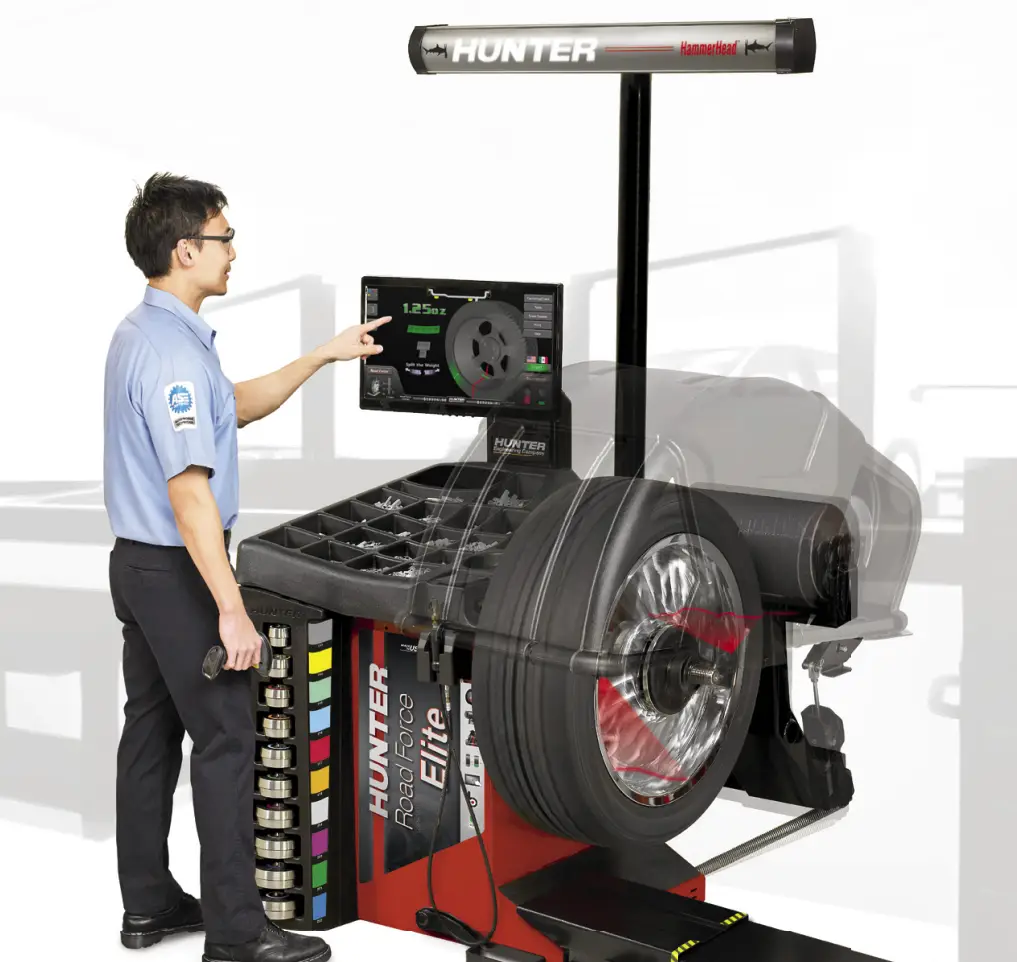Balance of tires is an essential procedure that makes sure your car’s tires are balanced evenly to prevent uneven wear and wear and increasing security. In this article we’ll go over the significance of balance of tires and how it functions, and how it contributes to a smoother and safer driving experience.
What is Tire Balancing?
Balanced tires refers to the procedure of altering the weight distribution on the tires of a vehicle and wheel assembly so that it is evenly rotated without causing any vibrations. As time passes wearing out of the tires and other elements can cause tires to be unbalanced and cause a rough and unpleasant ride. A proper balance assures the load is evenly distributed which results in better car handling, tire life, and comfort.
The Importance of Tire Balancing
1. Enhanced Driving Comfort
One of the main reasons Tire Balancing is necessary is to increase the level of comfort. Tires that aren’t balanced may cause significant vibrations, especially when driving at greater speeds. The vibrations can cause discomfort for drivers and passengers. If you balance your tire you can enjoy a more smooth ride, decreasing discomfort and increasing the overall experience.
2. Reduced Tire Wear
If a tire isn’t balanced the tire wears unevenly, which can lead to premature wear of the tire. Inequal wear could lead to the need for replacement of tires more quickly than anticipated. Balancing your tires can ensure that the tread wears evenly, thus extending the life for your tires and saving your money over the long term.
3. Improved Vehicle Handling
Unbalanced tires also impact the handling of your car. If the distribution of weight is not balanced the car could be prone to pulling to one side, or be less responsive when steering. If your tires are balanced, you will ensure that the car steers straight and responds appropriately to steering inputs, enhancing security and the overall performance.
4. Better Fuel Efficiency
Tires that are not balanced can cause your car to exert more effort to keep its speed constant, which leads to an increase in consumption of fuel. If your tires are aligned, your engine will have to work harder to keep the vehicle moving, which results in improved efficiency in fuel consumption.
How Does Tire Balancing Work?
1. Mounting the Tire and Wheel Assembly
Then, the wheel and wheel assembly are tacked on a balancing machine. The machine is fitted with sensors to detect irregularities in the distribution of weight in the tire.
2. Identification of Imbalance
The machine rotates through the tires and wheels and utilizes sensors to detect any uneven areas. They are then marked to indicate where the balance weights are to be placed.
3. Placement of Balance Weights
After the issue is recognized After identifying the issue, small weights are placed on the wheel’s rims at specific places. These weights help to even out the spread of the weight and assist in helping to ensure that the wheel and wheel assembly move in a smooth manner.
4. Rechecking
Once the weights have been placed after the weights are placed, the tire and wheel assembly is spun again to make sure that the tire has been well balanced. The machine will determine if that imbalance is rectified, and if necessary, any adjustments needed will be made.
Signs That Your Tires Need Balancing
- Vibrations If you experience vibrations on the seat, steering wheel or floorboards, especially at high speed, it could be a sign that your tires aren’t in balance.
- Unequal Tire Wear When you observe that the tires wear unevenly, it’s an indication that they’re not balanced.
- Noisy Tires Unbalanced tires also cause noise, especially when driving at high speeds.
- Steering Problems: If the vehicle pulls to one side, or if you notice a decline in responsiveness to handling this could be due to a tire imbalance.
When Should You Balance Your Tires?
It is essential to inspect and check the balance of your tires frequently particularly when:
- Install new tires.
- You are experiencing vibrations or steering problems.
- Your tires are rotated (typically every 6,000 – 8,000 miles).
- When you go through a pothole, or curb. It can make the balance shift.
Conclusion
In the end, tire balancing is an essential maintenance process that makes sure the tires are worn evenly. It also increases the comfort of driving, and enhances vehicle safety. Regularly balancing can help extend the life that your tires will last and could even increase efficiency in fuel consumption.
Tire Balance & Key Insights for Better Vehicle Performance
Balance of the tire is frequently misunderstood as tire alignment However, they have distinct purposes. Balance of the tire is a specific term used to describe the uniform distribution of weight over the tires of your vehicle, which can reduce vibrations and improves safety, comfort, and handling. In this post, we’ll go into the subject of tire balance and the importance of it for your car.
What is Tire Balance?
Balance of the tire is the procedure of making sure it is that weight from the tire and wheels is evenly distributed across the axle. This reduces wear unevenly as well as reducing the stress on the suspension system and reduces the vibrations that be experienced when driving. A balanced tire results in more comfortable handling, longer longevity of the tire, and a more comfortable driving experience.
How Tire Balance Affects Your Vehicle
1. Prevention of Vibrations
If your tires aren’t balanced it is possible to feel uncomfortable vibrations, particularly at high speed. These vibrations can cause driving discomfort and could result in more serious problems such as damage to your tires and damage to the suspension. A properly balanced balance of the tire can eliminate these vibrations, giving a smoother and more peaceful journey.
2. Improved Handling
Balanced tires will ensure that your vehicle is in a straight line and is able to handle properly. If the tires aren’t correctly balanced, the vehicle might be pulled towards one side, which can affect the steering accuracy. When you have the right balance of your tires the car responds to steering inputs rapidly and precisely.
3. Longer Tire Life
When tires aren’t in equilibrium, certain areas may wear more quickly than others, which can lead to uneven wear of the tire. That means the tire will have to be replaced earlier than if they had been properly balanced. If you maintain the correct balance of your tires it ensures the tires are wearing evenly and which will extend their lifespan.
4. Better Fuel Efficiency
Tires that are not balanced can cause your car to perform more efficiently, reducing the efficiency of your vehicle. In addition, the imbalance can cause unnecessary friction that requires more energy to keep the speed. Balanced tires reduce this friction, which allows your vehicle to operate more efficiently and use less fuel.
FAQ on Tire Balance
Question 1: What can I tell whether my tires require balance?
There may be vibrations on the steering wheel, or even the floorboard, particularly if you drive at high speeds. A lack of uniform tire wear or a decreased vehicle’s performance could be a sign that your tires are not in balance.
Q2 Do I have to do it myself?
While you can check for indications of imbalance however, balancing your tires requires the use of specialized equipment and know-how. It is recommended to go to a qualified technician or repair shop to get this kind of service.
Q3 What is the best time to check my tire balance?
It’s recommended to check your tires’ balance every when you replace wheels or turn them. If you are experiencing any steering issues or vibrations it’s a good idea to have your tires balanced earlier.
Q4 is tire balancing the same thing as alignment?
The process of balancing tires and alignment are two different things. Balancing makes sure it is that tire and wheel assembly is evenly distributed, whereas alignment refers to the adjusting of the wheel’s angles to ensure that they’re aligned according to the specifications of the manufacturer.
Q5 What happens if do not make sure my tires are balanced?
If you don’t balance your tire it is possible to be prone to vibrations, uneven tire wear, bad handling and less of a comfortable driving experience. In the long run this could result in damages to your suspension system and other components of your vehicle.
By understanding the importance of both tire balancing and tire balance , you can ensure your vehicle operates at its best, offering a smoother ride, better handling, and longer tire life. Regular maintenance, including balancing your tires, will save you money and enhance your overall driving experience.



